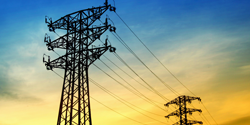Electric utilities are increasingly sponsoring programs that promote energy-efficient lighting. From upstream incentives to consumer rebates, these programs are saving utility customers – and their power providers – a significant amount of energy.

Types of Utility-Run, Residential Lighting Programs
Utilities across the United States employ a variety of programs to help their customers navigate today's new energy-efficient lighting choices, including the switch in labeling from watts to lumens. Utility lighting programs often combine cost savings with education. Such programs include:
Upstream Incentives. For example, National Grid offers special in-store pricing at select retailers of up to $6 off an ENERGY STAR CFL bulb and up to $25 off an ENERGY STAR LED bulb, helping to decrease the price for customers "downstream" at the store. Online Discounts. For example, residential electric customers of National Grid in Massachusetts can buy an assortment of efficient lighting products at discounted prices via National Grid's online catalog. Point-of-Sale Discounts: For example, the New York State Energy Research and Development Authority (NYSERDA) gives incentives to manufacturers and retailers to sell ENERGY STAR lighting products; in return, those manufacturers and retailers market educational materials at the point of purchase to customers and conduct educational outreach through social media. (Utilities use the same type of model.)
The Department of Energy has also made point-of-sale graphics available and has developed tip cards to help sales associates use easy to understand language when assisting a customer who might be confused by the myriad of energy-efficient choices.
"Up to 80% of purchase decisions are made right in the store, so messaging placement should contribute to – not confuse – the customer," said NYSERDA Associate Project Manager for Residential Energy Services Kerry Hogan. Speaking at a recent webinar hosted by the Alliance to Save Energy, Hogan noted that most shoppers are confused about their lighting choices, and shoppers are most likely to buy the cheapest option without taking long-term savings into account. So, marketing materials for energy-efficient lighting should be designed to grab attention and educate, but without adding to the cacophony of advertising found on store shelves.
Benefits of Energy-Efficient Lighting Programs for Utilities
Utility programs that promote energy-efficient lighting pay off for utilities in a variety of ways:
Lighting accounts for about 12% of the average home's energy bills, so utilities stand to save lots of energy if their customers upgrade to energy-efficient lighting choices, which use 25%-80% less energy than traditional incandescents Helping residents save on energy costs through efficient lighting is a feather in a utility's customer-service cap – especially for energy-conscious districts. Encouraging improved efficiency means homes won't tax capacity as much, so power distribution will be more reliable during peak use periods.
"By promoting energy-efficient lighting in the home, these programs can have a huge impact on energy savings," said Edward Bartholomew, National Grid commercial lighting program manager. Bartholomew added that the onus is on utilities to educate consumers about lighting to make the programs to work.
The Future of Energy-Efficient Lighting Programs for Utilities
Many utility-based residential lighting programs focus on incentivizing the purchase of CFLs. However, CFLs may have reached their saturation level in the market. Meanwhile, ENERGY STAR forecasts that prices for LED lamps will fall in the coming year. So, National Grid's Bartholomew predicts that more utilities will be shifting the focus of their lighting efficiency programs to LEDs.





